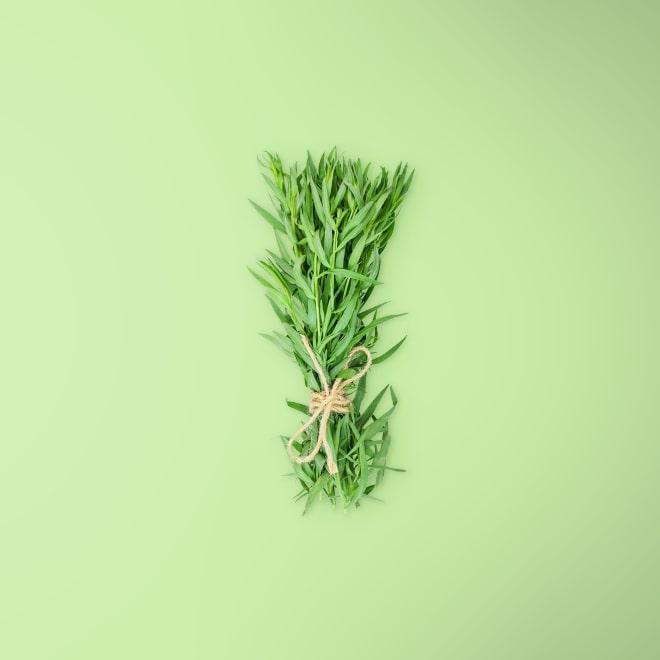Tarragon




Tarragon was first documented in Greece in 500 BC where it was used as medicine to draw out snake and insect venom from humans and animals! Two thousand years later, in the 16th century, tarragon rose to prominence in France, where it became an essential ingredient in French cuisine. In the 19th century, tarragon found its way to the United States, where it became common in a variety of dishes, ranging from salads to desserts.
Avoid tarragon that has damaged leaves that are not a vibrant green color.
To store fresh tarragon, wrap in a damp paper towel and store in the refrigerator.
It is best to keep tarragon far away from fruits and vegetables; the ethylene gas produced by fruits and vegetables will make tarragon spoil faster.
If you’re using dried tarragon, be sure that there are no signs of moisture before storing in a container in a cool, dry place.
Spice up your meats or grilled veggies with tarragon-shallot compound butter! Mix one stick of room temperature salted butter with chopped tarragon, chives, shallots, and freshly ground black pepper. Shape and cool.
Tarragon contains chemical compounds that prevent blood clotting in arteries, which may help prevent serious conditions such as strokes or heart attacks.
The polyphenolic content in Tarragon helps reduce blood sugar levels.
Adding thyme, rosemary, tarragon, and basil to your vinaigrette adds a great herbaceous flavor to dressings, marinades, and pickling brines for vegetables.
Like any herb, tarragon loses its flavor shortly after being cooked, so add fresh tarragon in the last few minutes of cooking.
Tarragon has a large variety of health benefits, such as helping with insomnia, temporarily relieving toothaches, regulating blood sugar levels, and preventing arterial clots.
Tarragon is a great source of Vitamin A, Vitamin B, Vitamin C, Calcium, Copper, Iron, Magnesium, Manganese, Potassium, and Zinc.
Corrections or improvements? Email us at
content@sidechef.com